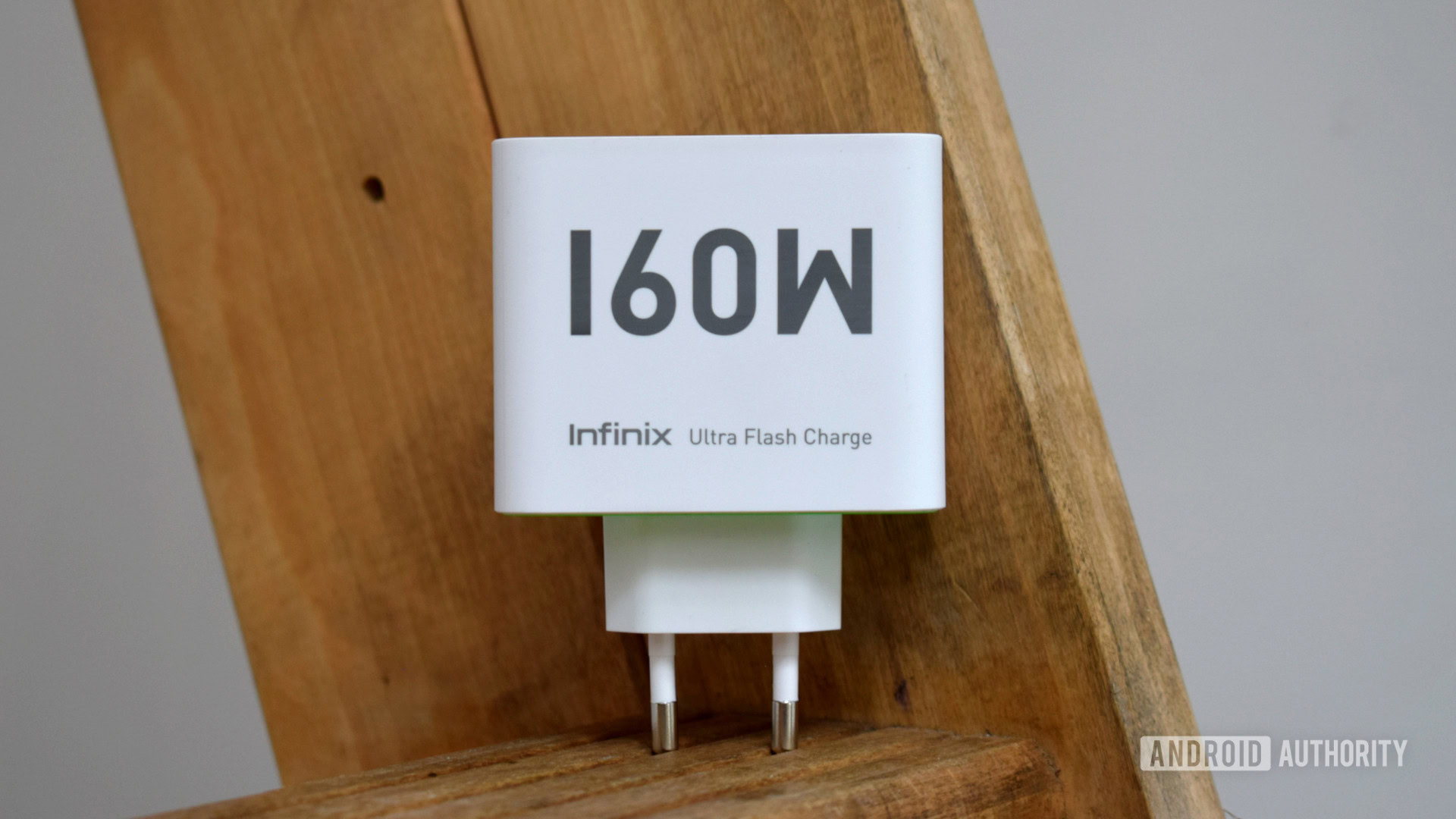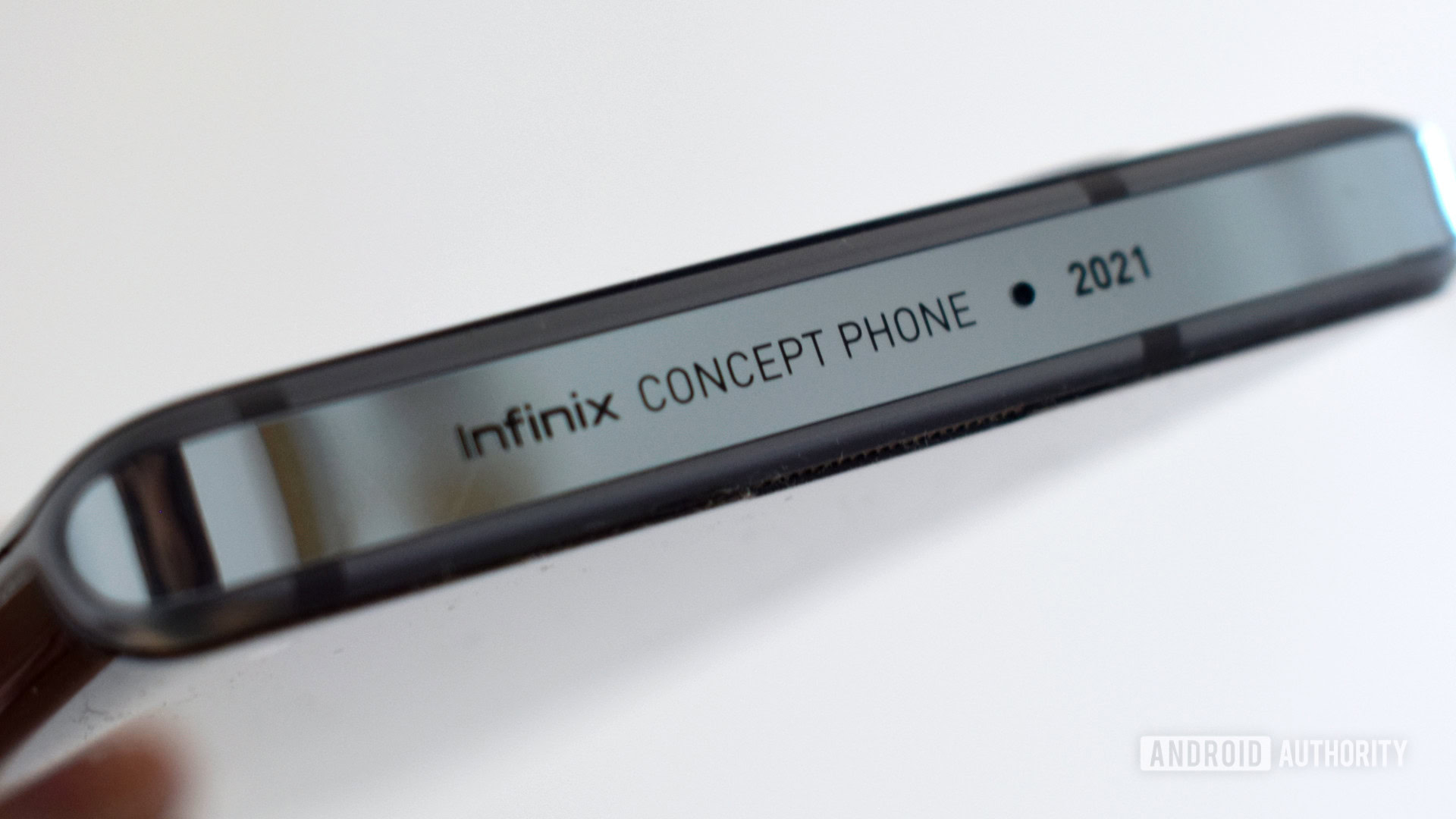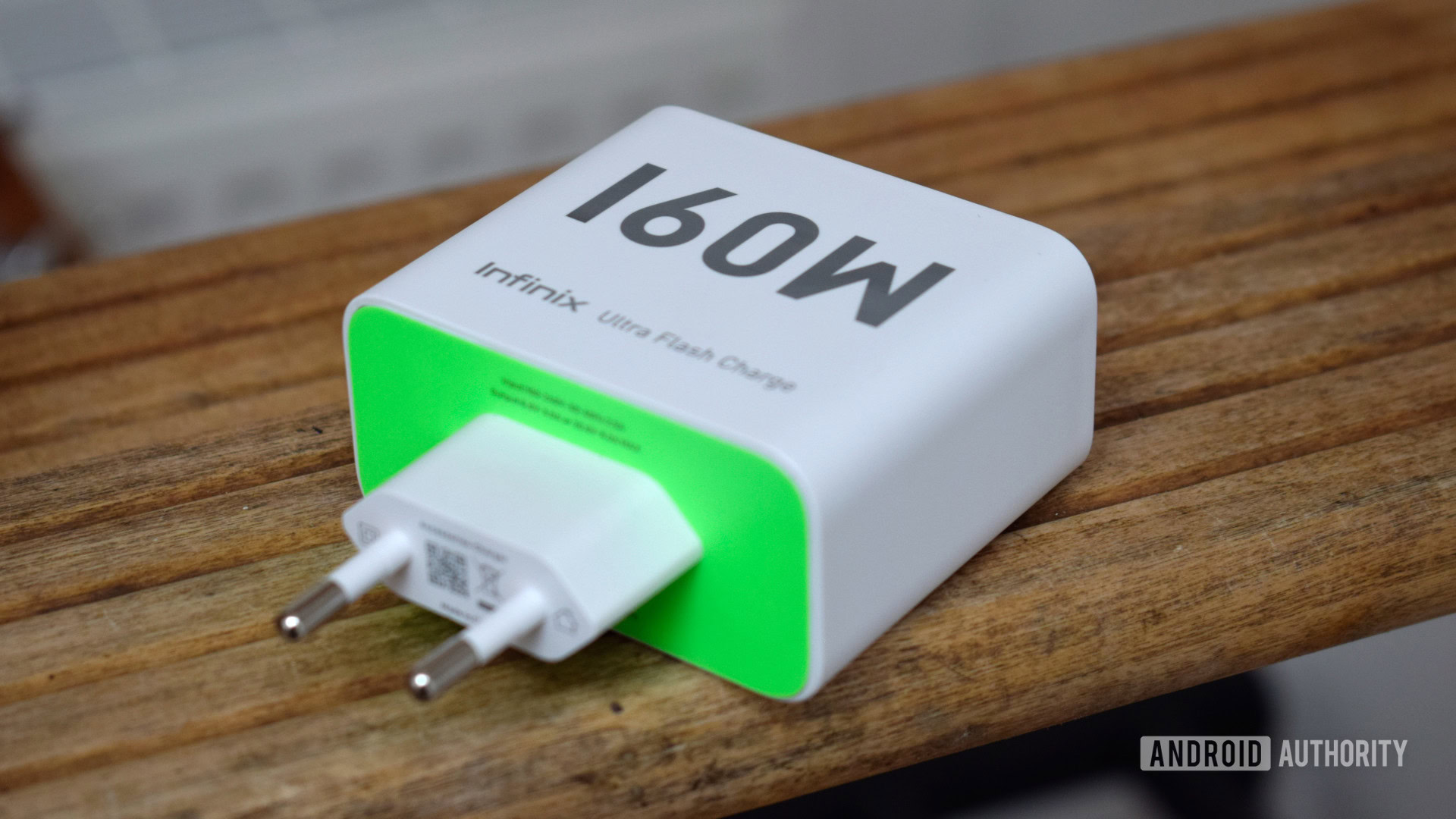Affiliate links on Android Authority may earn us a commission. Learn more.
Tested: 160W fast charging that won't melt your phone
Published onJune 30, 2021

Fast charging is one of the hottest areas of innovation in the smartphone industry right now. Various manufacturers, particularly those out of China, boast over 100W of charging power in their high-end smartphones, capable of having your phone back in the black in just a few minutes.
Infinix’s intriguing 2021 Concept Phone is all about ultra-fast charging. Boasting an industry-leading 160W of power, the company claims the phone goes from empty to full in just 10 minutes. By comparison, the iPhone 12 series charges at just 20W, the Samsung Galaxy S21 series at 25W, and the speedy OnePlus 9 Pro charges at 65W.
The Infinix Concept makes some bold claims about its fast charging capabilities. But just how fast is it in reality, and is it a good idea to charge a small mobile battery with this much juice? Let’s dive into the data.
Buyer’s guide: The best smartphone charging accessories
Before we get to the data…

Before we jump into just how fast Infinix’s 160W charger is, we should take a closer look at how the technology works and what Infinix has done to ensure that such a huge amount of power is safe to use in a smartphone form factor.
There are four key ingredients that go into the Infinix Concept Phone’s 160W fast charging system. The first is a Super Charge Pump that offers up to 98.6% smartphone energy charging conversion, so there’s minimal power and heat waste inside the handset. This is combined with 60 different integrated safety triggers that can, apparently, shut down charging based on the status of the charging cable, the mobile USB-C port, and the power adapter.
Interview: How OPPO made 125W fast charging a reality
Infinix’s Concept Phone 2021 packs in an 8C battery cell. C-Rate designates a battery’s internal resistance and ability to handle high charge and discharge currents for a given capacity. Infinix’s 8C battery offers 18% lower internal resistance compared to 6C cells, such as those used in OPPO’s 125W charging solution. When charging, Infinix also monitors battery temperature to keep it under 40°C (104°F). Temperature management is a must to prolong battery health when charging at these very high speeds.
In addition to Infinix’s proprietary 160W charging speed, the charging plug also supports the universal USB Power Delivery and USB PD PPS specifications at up to 100W. USB PD runs at 5-15V 3A and 20V 5A, while PPS offers scalable voltage from 3.6V to 20V with up to 5.1A of current. So yes, this 160W charger can fast charge a Samsung Galaxy S21 but still only at 25W.
160W charging speed test
If nothing else, Infinix’s 160W Ultra Flash Charge is really, really fast. The company says it can fully charge the phone’s 4,000mAh battery in just 10 minutes. I recorded a fraction over 11 minutes to full with the dual color-changing case technology disabled. Impressively, the Concept Phone hit 50% battery after just five minutes and 75% after a little over seven minutes. Talk about a quick top-up.
Our test recorded 175W peak power drawn from the wall and 142.6W (17.7V, 8.29A) at the smartphone’s USB port. That works out at an energy efficiency of 81.5%. Not the best on the market, but not too far from a typical score for a modern high-power GaN charger. Interestingly, the internal battery voltage measures around 8V, double that of a standard phone battery. This suggests that Infinix stacks its batteries in series to enable charging with a much higher voltage than typical smartphone charging (nearly 18V versus 9V typical).
Let’s compare this to another example of super-rapid charging tech: Xiaomi’s 120W charger. For reference, Xiaomi’s charger took 21 minutes to charge the Mi 10 Ultra’s 4,500mAh battery.
A quick bit of math reveals that Infinix’s 160W technology charges at about 363mAh per minute versus Xiaomi’s 120W tech at 214mAh per minute. Infinix’s solution is an incredible 41% faster for the same battery capacity.
160W is only supplied for a couple of minutes before scaling back to 80W.
We also tested the Concept Phone using other universal chargers, however, the maximum power I could obtain was just 19W. Unfortunately, the phone’s only fast charging option is proprietary. Even so, 19W is not far off what you’ll find in many of today’s flagship smartphones, such as the iPhone 12, and the Concept Phone charges to full in 55 minutes in this mode. Infinix’s 160W solution is 5x faster but uses about 8x the power. While the 160W mode hits 53% battery after five minutes, 19W charging manages just 11%.
Finally, we tracked the smartphone’s battery temperature while fast charging. Take these software-sensor readings with a pinch of salt, as they can vary from device to device.
The Infinix phone measured just above its self-imposed 40°C threshold, but only in the final minutes of the charge cycle. I clocked the phone at a 41.9°C peak, which isn’t too bad given the sheer level of power being used. The low-resistance battery and efficient circuitry seem to do their job very well.
Infinix's solution seems to be, surprisingly, 1-4°C cooler than other fast charging solutions.
Returning to our Xiaomi Mi 10 Ultra comparison, that phone recorded a peak of 43.8°C and spends more time in the red zone. Likewise, the OnePlus 9 Pro charging with 65W Warp Charge peaks at 43.2°C, hits 40°C faster, and spends more time at high temperatures than its rivals. Infinix’s solution seems to be, surprisingly, 1-4°C cooler than other fast charging solutions, which means slightly less wear and tear on the battery for every minute spent plugged in.
All of these fast charging technologies are a little on the hot side. But remember, the Infinix only exposes its battery to high temperatures for less than 11 minutes, compared to Xiaomi’s 21 and OnePlus’ 28 minutes. While still a little too warm for my liking, Infinix’s temperature-aware fast charging technology is very impressive.
Is Infinix’s 160W charging any good?

Fully charging your smartphone in a little over 10 minutes is an incredible feat. However, it’s the use of temperature-aware charging technology that’s the real revelation in Infinix’s 160W charging solution.
As temperature and battery percentage rise, Infinix Ultra Flash Charge reduces the amount of power sent to the phone. Power fell from 160W to 80W after a few minutes and then to around 60W by the time the phone finished charging. This has the added benefit of matching ideal battery charging characteristics, where additional current should be provided earlier in the charging cycle.
While still a little warm, Infinix's fast charging and temperature tracking technology is very impressive.
Intelligent power scaling prevents the phone’s battery temperature from peaking too early while still providing an astronomical amount of charging power. I’d like to see even more aggressive temperature management (around 37°C) to really help maximize battery longevity at a small expense to charge time, but Infinix is the best implementation I’ve seen so far of a well-balanced ultra-fast charging solution.
The combination of high-end battery technology and intelligent monitoring allows for high-power charging within reasonable temperature limits. There are, however, still outstanding questions about the cost of a commercial product packing all this technology, screen-on time, as well as battery longevity over a handset’s lifetime.